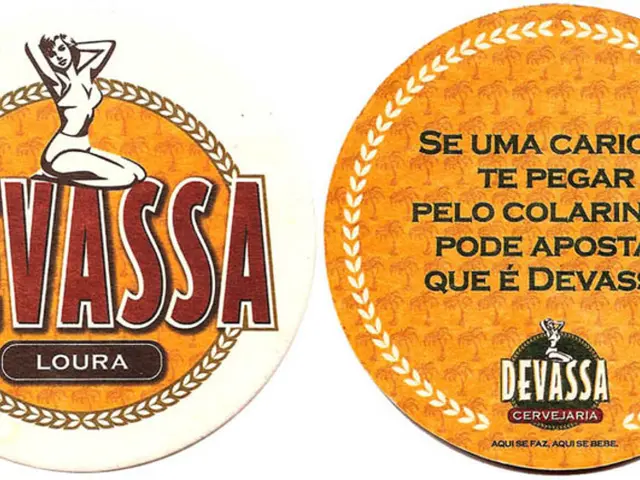Asian Traditional Attire Explored: Exploration of Hanbok and Hijab Ensembles in Asia
Losing My Cool, One Fashion Hotspot at a Time
Asia is a bubbling cauldron of cultures, traditions, and style. From the bustling streets of Seoul to the serene temples of Kyoto, this continent is a treasure trove of unique fashion that celebrates its rich heritage and resonates with the modern world. Let's dive into the vibrant world of Asian traditional clothes, where the past and the present elegantly intertwine.
The Swirling Hanbok: Korean Fashion Star
Let's kick things off with the Hanbok, a 1,500-year-old garment still adorning the streets of Korea. Characterized by its captivating colors and minimalistic design, the Hanbok boasts two main parts: the "jeogori," a blouse-like top, and the "chima," a flowing skirt for women. Men rock a stylish version too, with the "jeogori" paired with "baji"—tight-fitting trousers.
The Hanbok was once crafted from natural fabrics such as hemp and silk, with its hues inspired by Mother Nature's palette. The color selection reflected social standing or marital status; bright shades were reserved for children and unmarried women, while married ladies flaunted more subdued tones. Today, the Hanbok is enjoying a revival, as contemporary designers breathe modern life into traditional designs, giving birth to "fusion Hanbok" that appeals to the younger generation across the globe.
The Evolving Sari: Indian Garment of Grace
Next on our fashion runway, let's be entranced by the graceful, ever-changing Sari, an emblematic piece of clothing worn by women in India. Wrapping around the body in various styles, the Sari can measure anywhere from 4 to 9 meters. In its simplest form, it involves wrapping the garment around the waist, leaving one end to be elegantly draped over the shoulder.
The Sari's story dates back to the Indus Valley Civilization, and it embodies nothing but grace and femininity. This versatile attire is worn for both everyday life and special occasions, with regional differences in fabric, patterns, and draping styles that showcase the immense diversity of Indian culture. Modern Sari designers are experimenting with fabrics, prints, and draping styles, making this classic Indian garment a popular choice for women globally.
The Symbolic Hijab: More Than Meets the Eye
Now, we venture into the Islamic world, where the Hijab transcends its role as mere headscarf. The Hijab symbolizes modesty, privacy, and morality. The term refers to the principle of modesty in Islam and can describe a wide variety of head coverings worn by Muslim women. Though its appearance and cultural significance vary greatly, this headpiece symbolizes obedience to religious norms and serves as a badge of identity.
Modern day has seen the Hijab evolve into a fashion statement as well, with designers crafting Hijabs that combine traditional modesty with contemporary style. This fusion has sparked the rise of "modest fashion" not only in Muslim countries but also in the West, where acceptance and appreciation for Hijab-oriented fashion are growing.
The Vibrant Ao Dai: Vietnam's Pride and Joy
Next up we travel to Vietnam, home to the Ao Dai, a stunning traditional dress that's been captivating hearts since its origin in the 18th century. The Ao Dai is characterized by its long silhouette, form-fitting nature, and side slits that extend above the waist. Underneath the Ao Dai, Vietnamese women don a set of trousers.
Over the centuries, the Ao Dai has undergone transformations influenced by French colonialism and modern fashion trends. Contemporary iterations showcase a dazzling array of colors, intricate embroidery, and diverse fabric types, making the Ao Dai a beloved option for formal occasions like weddings and Lunar New Year celebrations.
The Enigmatic Kimono: A Japanese Icon
Last but not least, we arrive in Japan, where the Kimono reigns as one of the most revered traditional garments worldwide. Derived from Chinese-inspired garments, the Kimono has a history dating back to the 7th century CE, and it became uniquely Japanese by the Edo period (1603–1868). The Kimono is characterized by its T-shaped design, wide sleeves, and a sash called an "obi" that secures the garment at the waist.
Each Kimono is a work of art, adorned with elaborate patterns and symbols representing various aspects of Japanese culture, nature, and seasons. Kitsuke, or the art of wearing a Kimono, is an important skill passed down through generations and remains an integral part of Japanese culture, though the Kimono is no longer everyday wear.
Traditional Asian clothes come in myriad forms, each brimming with cultural heritage and historical depth. From the elegant Hanbok to the Hijab, the vibrant Ao Dai to the enigmatic Kimono, these traditional attires continue to inspire and evolve, clouding the lines between past and present, tradition and modernity. As the world becomes increasingly globalized, the preservation and celebration of these cultural treasures become more vital than ever.
The Majestic Sherwani: South Asia's Noble Attire
In South Asia, particularly in India and Pakistan, the Sherwani stands tall as a symbol of regal elegance and tradition for men. Originally associated with the nobility of the Indian subcontinent, the Sherwani is a long, coat-like garment buttoned up to the collar and falling just below the knee. Underneath, men wear a loose-fitting shirt known as a Kurta, often paired with Churidar, tight-fitting trousers.
The Sherwani is traditionally made of luxurious fabrics like silk or velvet and is embellished with intricate embroidery work. Nowadays, the Sherwani's popularity spans beyond its original boundaries, making it a popular choice for weddings, formal occasions, and even political attire in the region. Modern designers are reimagining the Sherwani, playing with colors, cuts, and fabrics to keep it relevant in the ever-changing fashion landscape.
The Enchanting Cheongsam: China's Legacy
Let's venture to China, where the Cheongsam (or Qipao) takes center stage. This form-fitting, long dress is famous for its simplicity yet elegance. Tracing its roots back to the 17th century but getting its modern revival in the 1920s in Shanghai, the Cheongsam boasts a long silhouette and side slits that stretch above the waist.
Traditionally made of silk and adorned with intricate embroideries, each Cheongsam embodies the essence of Chinese aesthetics. In contemporary fashion, the Cheongsam has been adapted and reimagined, making it a beloved choice for formal events and an inspiration for fashion designers worldwide.
The Traditional Kebaya: Southeast Asia's Heritage
Next on our fashion tour, we arrive in Southeast Asia, where the Kebaya reigns as a popular traditional attire for women. This combination of blouse and dress is characterized by its form-fitting nature and is often decked out with brocade or floral patterns. The Kebaya is traditionally paired with a Sarong, a type of traditional skirt.
The Kebaya's heritage can be traced back to the 15th century and has transformed over the centuries, influenced by various cultural interactions. The Kebaya remains a symbol of national identity, especially in Indonesia, where it is worn on official national events and ceremonies. Modern Kebayas incorporate diverse styles and fabrics, capturing the dynamic nature of Southeast Asian culture and fashion.
The Distinctive Baju Melayu: A Malay Classic
Last but not least, we travel to Malaysia and parts of Indonesia, where the Baju Melayu is celebrated as a traditional men's attire. The Baju Melayu consists of a loose tunic that's paired with trousers, often accompanied by a "sampin," a sarong-like cloth wrapped around the waist.
Traditionally made from cotton or silk, the Baju Melayu arrives in a spectrum of colors. The garment's comfort and simplicity mirror the tropical climate of the region. Nowadays, contemporary versions of the Baju Melayu keep the traditional essence while incorporating modern fashion elements, such as various types of collars and fabrics.
In conclusion, traditional Asian clothing represents a rich tapestry of cultural heritage and identity. Though deeply rooted in history and tradition, these garments continue to evolve and influence the global fashion scene, offering a glimpse into the past and a vision for the future where tradition and modernity coexist harmoniously.
The revival of traditional clothing like the Hanbok and the Ao Dai in Korea and Vietnam, respectively, showcases a merging of cultural heritage with modern trends in fashion-and-beauty. Similarly, the preservation and reinterpretation of the classic Sari in India demonstrate the potential for home-and-garden items, such as traditional Indian fabrics and patterns, to extend their influence to the fashion industry.
The transformation of clothing articles like the Hijab, the Sherwani, the Cheongsam, the Kebaya, and the Baju Melayu profoundly illustrates the ongoing evolution of lifestyle choices. These garments, steeped in history and tradition, continue to captivate audiences worldwide by blending elegance, grace, and modernity, thereby promoting a deeper understanding and appreciation of various Asian cultures and heritage.




